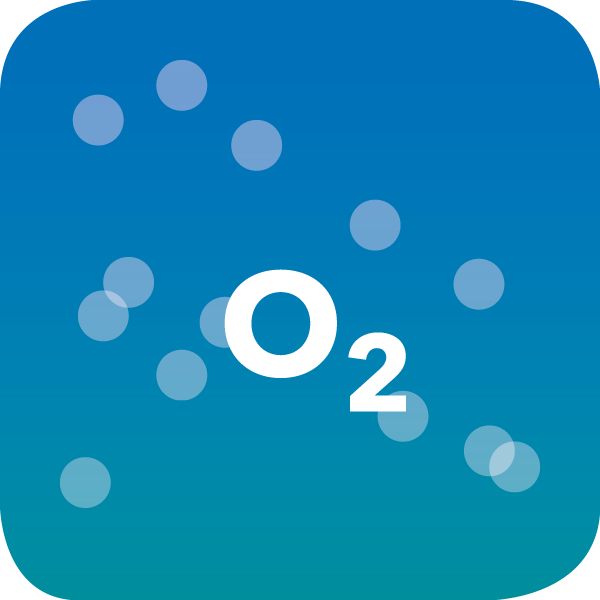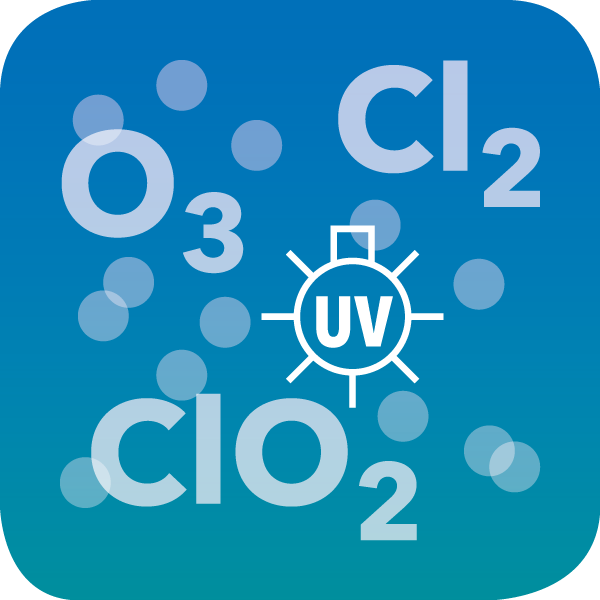 Pre-Treatment, Coagulation and Flocculation
Pre-Treatment, Coagulation and Flocculation
Large debris such as branches, leaves, and sediments are removed through screens and sedimentation tanks. To supplement the sedimentation coagulants (Fe or Al salts) and flocculants (polymers) are added. These two serve to bind smaller particles to form micro or macro flocs to accelerate the subsequent sedimentation. Typical measuring parameters are (measuring technique see below):
 Aeration
Aeration
Groundwater, being isolated from the atmosphere, can accumulate various dissolved gases like carbon dioxide (CO₂), hydrogen sulfide (H₂S), and methane (CH₄). These gases can affect water quality by altering its taste, odor, and corrosiveness. Aeration introduces oxygen into the water, allowing these gases to escape into the air.
Metals such as iron (Fe²⁺) and manganese (Mn²⁺) are often present in groundwater in dissolved forms. When the water is exposed to air (specifically oxygen), the metals oxidize. Once oxidized, these particles can be easily removed in subsequent filtration steps.
Several key parameters are typically measured to ensure the process is effective at removing gases and oxidizing dissolved metals:
 Filtration
Filtration
The filtration process can be divided into filtration through a matrix (e.g. sand filter with or without activated carbon) and filtration on a surface (e.g. membrane filtration).
Sand filtration is used for the separation of solids as the raw water flows through the filter and the solids adhere and remain in the matrix. As the filter has to be rinsed regularly, often several filters are operated to clean the raw water on the other filters in the meantime. In addition, a biologically active layer builds up on the filter surface, which must be regularly removed. If an activated carbon layer is embedded, dissolved organic substances or impurities that are difficult to degrade are also removed. Monitoring parameters are (measurement technique see below):
Depending on the pore size, membrane filtration is able to remove not only solids but also dissolved particles and also has a disinfecting effect. However, membrane filtration is not approved for disinfection at least in Germany. Depending on the pore size, a distinction is made between micro (0.1–10 µm), ultra (0.001–0.01 µm), nano filtration (0.0005–0.007 µm) and reverse osmosis (<0.001 µm). Monitoring parameters are:
 Disinfection
Disinfection
For disinfection, the addition of chlorine, chlorine dioxide, ozone (chemical disinfection) or UV treatment (physical disinfection) can be considered. In Germany, ozonation is not permitted as the sole disinfection method.
In the chemical processes, microorganisms are inactivated. The inactivation depends on the c*t values, i.e. on the concentration (c) to which the microorganisms are exposed over a certain time (t). The disinfection performance is limited by the presence of ammonium (formation of chloramines) and at higher turbidity levels (>1 NTU). Chemical oxidation of inorganic or organic components also takes place in all processes. For ozonation this is the primary objective. Monitoring parameters are (see below for measurement technology):
Physical disinfection damages the DNA of microorganisms and thus deprives them of their ability to divide. The performance here depends on the UV dose and requires a low turbidity (<1 NTU). Chemical oxidation only takes place in the presence of H2O2.
Others (e.g. decarbonization, activated carbon treatment)
Decarbonization, in the context of reducing calcium and magnesium ions in water, typically refers to a process aimed at reducing water hardness. Hard water contains high concentrations of dissolved minerals, primarily calcium (Ca²⁺) and magnesium (Mg²⁺) ions. The decarbonization process for reducing calcium and magnesium ions is typically known as lime softening. It works by chemically precipitating the carbonate hardness from the water. After the chemical reactions, the precipitated calcium carbonate and magnesium hydroxide are removed from the water through sedimentation and filtration. Typical monitoring parameter are (measurement technology see below):
Activated carbon removes dissolved organic and hardly degradable (micro) impurities. In addition, it also promotes biological degradation and provides protection in the event of short-term exposure shocks. The process can be carried out using its own filter bed, stored in other filters or integrated into the treatment process using powdered activated carbon. Depending on the raw water and rinsing processes, it can take one month or one year until the carbon is fully loaded. Afterwards the coal has to be regenerated or burned. Typical monitoring parameter is (measurement technology see below):
- SAK before and after the treatment stage